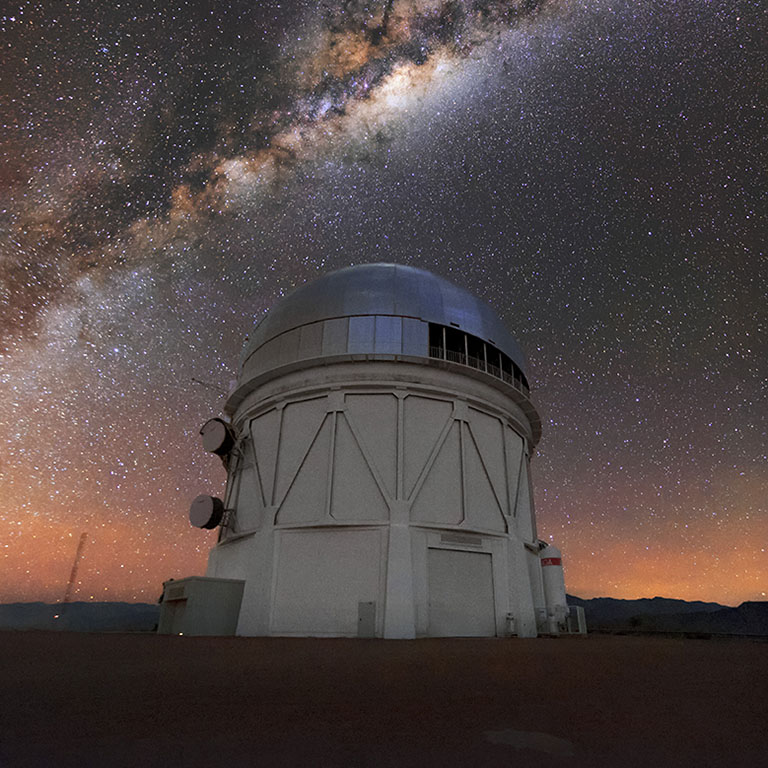Indiana University astronomers have begun to explore the bulge of stars in the heart of our Milky Way using a new survey of 250 million stars imaged with the Dark Energy Camera on the Blanco Telescope in Chile. The Blanco DECam Bulge Survey (BDBS) imaged some 200 square degrees of sky – an area 800 times the size of the full moon, using six filters from ultraviolet through near-infrared. The full catalog of stars is available on the IU’s Scalable Compute Archive, managed by University Information Technology Services.
The BDBS is driven by questions about the structure and stellar populations of the Bulge. These data help us define the Bulge’s “X” shape, explore the distribution of stellar metallicities, and answer questions about the ages of stars in the Bulge. Is the Bulge comprised of mostly old stars, or does it contain populations of intermediate-age and younger stars – and how are the different populations distributed in space? We know the Bulge contains globular star clusters, as well, but how much have these clusters contributed to the stellar populations in the Bulge? Answering these questions tells us about the formation and evolution of the central regions of our galaxy.
The observations focused on the southern Galactic Bulge, a region less obscured by gas and dust located in the intervening disk of the Milky Way than the northern Bulge. The survey region extends some 10 degrees of galactic longitude on either side of the center of the galaxy, and from -2 to -12 degrees galactic latitude. The survey area includes 26 globular clusters as well as the popular “Baade’s Window” region.
The BDBS required some 7000+ DECam exposures totaling 450,000 individual CCD images. These images were processed using IU’s peta-byte scale Data Capacitor II storage system along with the large-memory computer cluster Carbonate. While the observations were completed in just 14 nights, processing the data to produce accurate photometry of 250 million stars took weeks, even on IU’s supercomputers. Next, the more than 10 billion individual stellar measurements were calibrated and combined to produce the final catalog. Typical image quality is 1 arc-second and the survey reaches to the main sequence turnoff in many regions.
Work by IU graduate student Justin Kader has focused on understanding the stellar content of the Bulge’s globular clusters. We know that nearby globular clusters contain populations of stars with different chemical compositions, and Kader has used BDBS Photometry combined with proper motions from ESA’s Gaia mission to identify probable members of each cluster, and then to look at the distribution of composition in each cluster. Since the BDBS data extend well beyond the clusters’ outer limits, he is able to extend his study of the clusters well beyond earlier observations with the Hubble Space Telescope, and also to demonstrate that ground-based, ultraviolet photometry can be used to identify multiple populations in clusters.
The BDBS has been supported by National Science Foundation grants AST-1413755 to UCLA and AST-1412673 to Indiana University Bloomington.
To Read More about the Survey, visit the NoirLab Website: https://noirlab.edu/public/news/noirlab2027/


 The College of Arts
The College of Arts